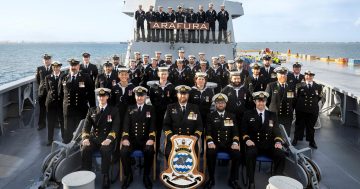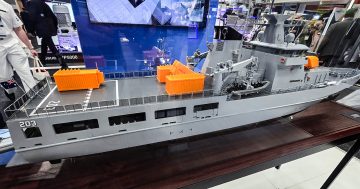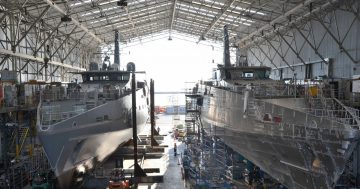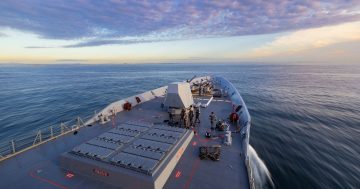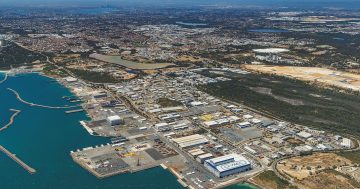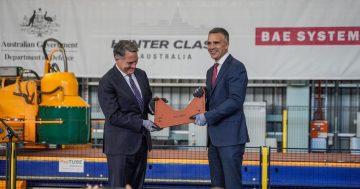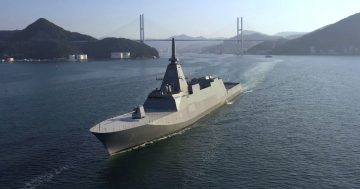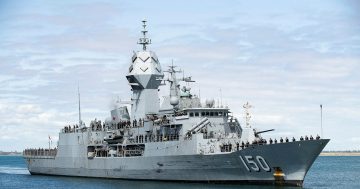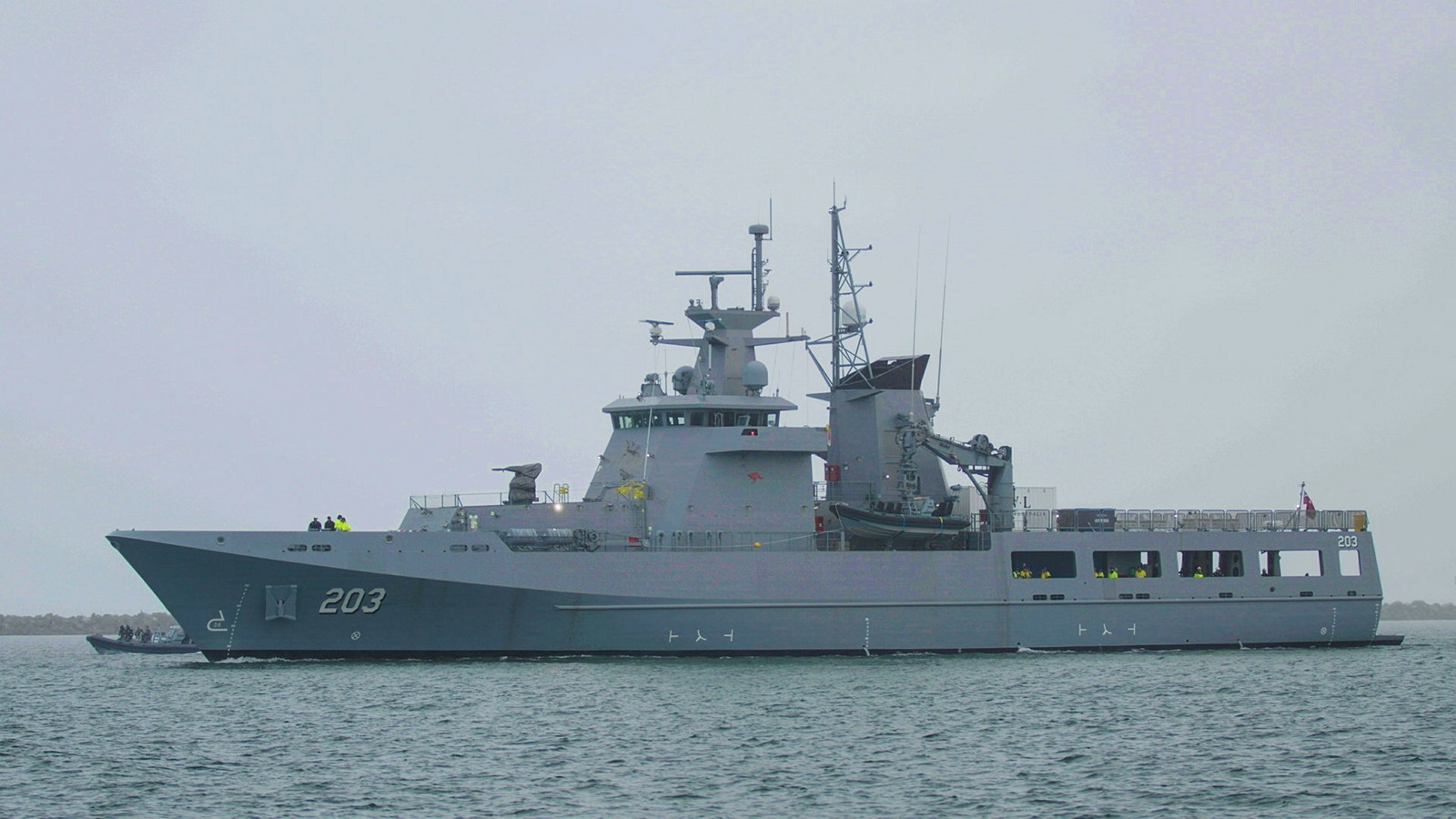
NUSHIP Arafura returns from sea trials off Adelaide. Photo: Luerssen Australia via ADF.
The first of six Arafura-class offshore patrol vessels (OPVs) has been handed over to the Royal Australian Navy (RAN).
NUSHIP Arafura is the lead vessel of the class, which is based on the Darussalam-class OPV operated by the Royal Brunei Navy and designed by Luerssen.
The vessel underwent manufacturer’s sea trials in the latter half of 2024 and will now be fully tested by the RAN before hopefully being commissioned later this year.
Luerssen’s 1640-tonne OPV design was selected in 2017 under Project SEA 1180 Phase 1 to substantially upgrade the navy’s patrol capabilities. The OPVs are more than five times the displacement of the Armidale-class patrol boats they were designed to replace.
The design was also flagged as a likely contender to form the basis of several additional vessels to support the navy’s mine warfare and autonomous underwater vessel programs.
The first two Arafura-class vessels were built by Luerssen Australia at the Osborne shipyard in Adelaide, with the balance of the fleet intended to be built at Henderson in WA by a joint venture between Luerssen Australia and Civmec.
The decision to split the build was designed to soften the shipbuilding ‘’valley of death’’ the Osborne yard was experiencing between the completion of the three Hobart-class destroyers and the start of work on a planned 12 Hunter-class frigates (later reduced to six), and then establish a larger continual shipbuilding presence at Henderson going forward.
Construction on the first three vessels began on schedule, with the keel of the first one being laid in April 2020, but the project soon struck problems with the design. First, the planned OTO Marlin 40 mm main deck gun for the OPVs was deleted due to difficulties integrating it into the vessel.
Due to these difficulties, the navy decided to use much smaller-calibre 25 mm guns taken from the retired Armidales. This gave the OPVs much-reduced firepower than planned, and this was exacerbated by the decision to not add an anti-ship missile capability for which the Bruneian vessels are designed.
This is not a minor design change, and it severely impacted the project’s schedule. These have been exacerbated by concerns over the OPV’s seaworthiness and combat capabilities due to inadequate fire-protection systems and a lack of self-defence systems.
The first vessel was launched in December 2021, but the design delays meant the Commonwealth was forced to order several batches of much smaller Cape-class and Evolved Cape-class patrol boats to fill capability gaps.
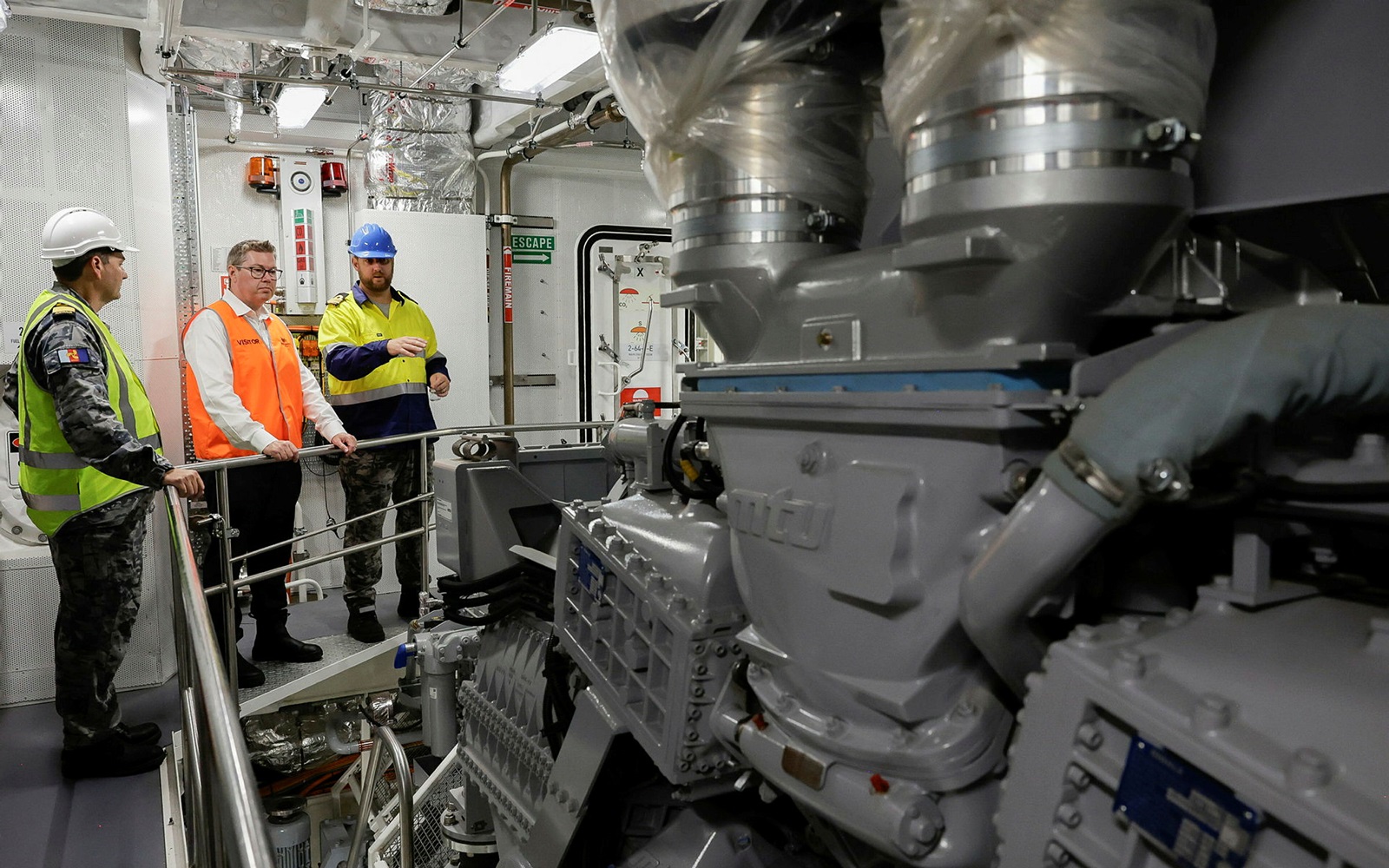
While Defence Industry Minister Pat Conroy (centre) was happy to be photographed touring the first OPV earlier in the project, he was nowhere to be seen or heard from for its handover to the navy. Photo: ADF.
In October 2023, SEA 1180 Phase 1 was listed on the government’s Projects of Concern list due to the “project experiencing delays in delivery of both the vessels and the associated support system”.
“Top-level focus is essential to ensure we are doing all we can to remediate areas of deficiency,” Defence Industry Minister Pat Conroy said after a December 2023 summit with Luerssen Australia and senior Defence officials.
“Defence and our industry partner Luerssen Australia have committed to jointly address the significant schedule delays facing this project. Defence looks forward to working collaboratively with Luerssen Australia to get the project back on track.”
Because the Cape and Evolved Cape-class vessels were already in production and therefore much cheaper and more readily available, the government’s 2024 Enhanced Lethality Surface Fleet Review saw a commitment to additional numbers of these vessels.
It also reduced the planned buy of 12 OPVs to six and relegated the OPV’s planned mission to a “constabulary” (i.e. border security) one, while the planned mine-warfare mission was shelved.
Move forward to today where, in the lead-up to a knife-edge federal election and with numerous seats in WA likely to be in play, it’s amazing that not a ministerial photo op has been seen, nor did the official statement regarding the handover even come from a minister’s office. Instead, it was quietly issued as a brief, 204-word release by the department.
Defence’s Deputy Secretary Naval Shipbuilding and Sustainment Jim McDowell said the delivery was an important milestone in the Australian Government’s investment in naval shipbuilding and sustainment.
“The delivery of the first-of-class vessel to Defence highlights Defence’s commitment to working through complex projects to deliver critical capability to our Australian Defence Force, built here in Australia,” he said.
In a LinkedIn post, the navy’s Minor Vessel Capability Life Cycle Manager (CLCM), Raytheon Australia, said the delivery marked a significant milestone for the navy’s Minor War Vessel Fleet, and would enable enhanced civil maritime security and regional engagement.
Raytheon said the company was “proud to have supported and prepared for the introduction of this new capability into service”.
“Our dedicated team has been working closely with the MV SPO, Enterprise partners, and industry to ensure a robust support system environment is in place that will assure and strengthen the OPV’s seaworthiness, ship availability, and readiness for the navy’s mission.”
With the reduction in the number of OPVs to be built, Luerssen Australia decided to cut its losses in Australia, and last October announced it entered into discussions to sell all of its Australian holdings, assets, employees and licences to Civmec.
But after the first delivery, Luerssen issued a brief statement on LinkedIn, saying it was “proud to reach the milestone after the completion of sea trials and acceptance of the support system last year”.
“Bringing a new ship to life is a special moment, and it wouldn’t have happened without the hard work of so many people,” managing director Malcolm Taylor said. “Luerssen Australia has a fantastic team who are dedicated to delivering world-class OPVs to the [navy], and the feedback we are getting is great.”
Upon commissioning, OPV1 will be HMAS Arafura and OPV2 will be HMAS Eyre, with the remaining vessels to be named HMAS Pilbara, HMAS Gippsland, HMAS Illawarra and HMAS Carpentaria.


